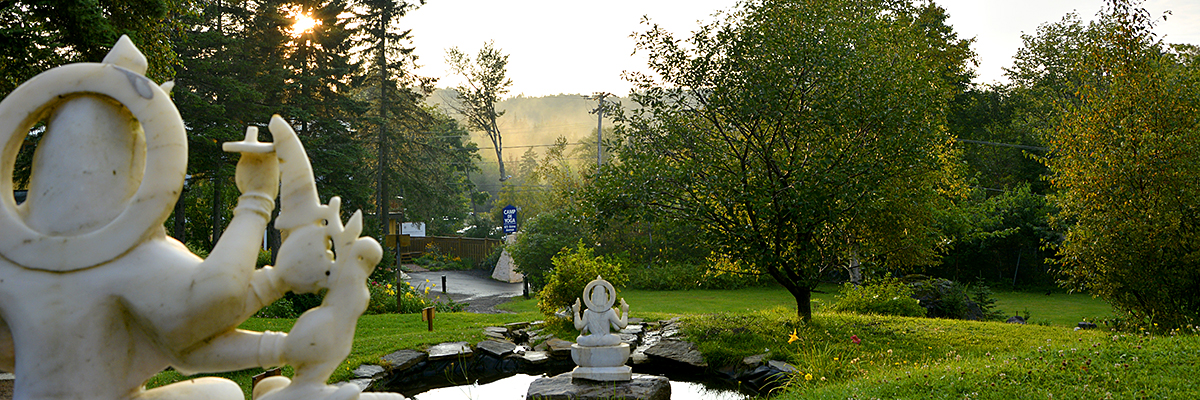
Temple Facts
The dome and scepter at the very top of the temple are known as the Kumbham. They transmit all the energy that is created within the temple out to the universe. They also attract energy which is then balanced, transmuted, and grounded, filling the temple with pure vibrations.
The pond in front of the temple is symbolic of the great tanks of water in front of temples in India. Often devotees would come from great distances and would wash themselves in the temple pool before entering the house of the Lord. People could also offer their daily worship to the sun standing in the water. During festival times the deities were given ceremonial baths and the temple animals were cleaned in the tank. It provided fresh water during times of drought as most ponds were fed by underground springs. The water was regularly cleaned and provided a cool meeting place in the evenings. Water is symbolic as purity and serenity – a washing clean of all things. The temple pond was a place where birds, animals and people all lived co-existed in harmony.
The pond in front of the temple is symbolic of the great tanks of water in front of temples in India. Often devotees would come from great distances and would wash themselves in the temple pool before entering the house of the Lord. People could also offer their daily worship to the sun standing in the water. During festival times the deities were given ceremonial baths and the temple animals were cleaned in the tank. It provided fresh water during times of drought as most ponds were fed by underground springs. The water was regularly cleaned and provided a cool meeting place in the evenings. Water is symbolic as purity and serenity – a washing clean of all things. The temple pond was a place where birds, animals and people all lived co-existed in harmony.
Why come to temple?
There are many reasons why people come to Temples. Some come to visit God’s home to feel and remember His Divine Love and Beauty. Others go to give thanks for Grace received.
Traditionally, all over the world when people are going through difficulties they pray to God for help or protection. In return, they promise that they will do penance such as offering their hair, fasting, or going on a pilgrimage. They may promise to do a puja or worship at the temple. Many family members and friends attend the puja and later are fed by the person sponsoring the puja. The principle is that the more people they feed the happier they will be. Let God’s home be your own inner sanctuary.
Temple Etiquette and Rules
To visit a Temple is to visit God’s home. Prepare your body by bathing and putting on clean clothes. Traditional dress is best – Saris or long dresses for women, long dresses for girls, Dhotis for men and boys. Modest clothing suitable for sitting on the floor is suggested. Please do not wear shorts or hats. In anticipation of your visit, prepare your mind by thinking of God. You may bring a gift of fruits or flowers.
Shoes should be removed before entering the temple.
Greet the deities one by one, starting with Ganesha, pressing your palms together in Namaskara or prayer. You may offer each deity fruits, flowers or money. Try and feel the divine Presence. Bring your problems, your wishes, desires, and your sorrows to the Temple. The temple is the place to work with your problems. Feel free to meditate or sit quietly.
Please be respectful of the Gods and Their sanctity at all times. Never enter one of the altars or touch the deities. Do not sit with your feet pointing towards the deities or another person. Receive all offerings with your right hand. In India, the left hand is used for toileting whereas the right is used for eating and spiritual practices. Aside from these few restrictions, be yourself and worship as you wish. God will receive your devotion, however you offer it.
Special Festivals and Pujas/Homas information is updated on the website periodically, so please go to special events
